Are You 21 Or Over?
YesOr
No By clicking yes, you certify that you are over 21 years old. By using this website, you agree to our legal disclaimer.Table of Contents
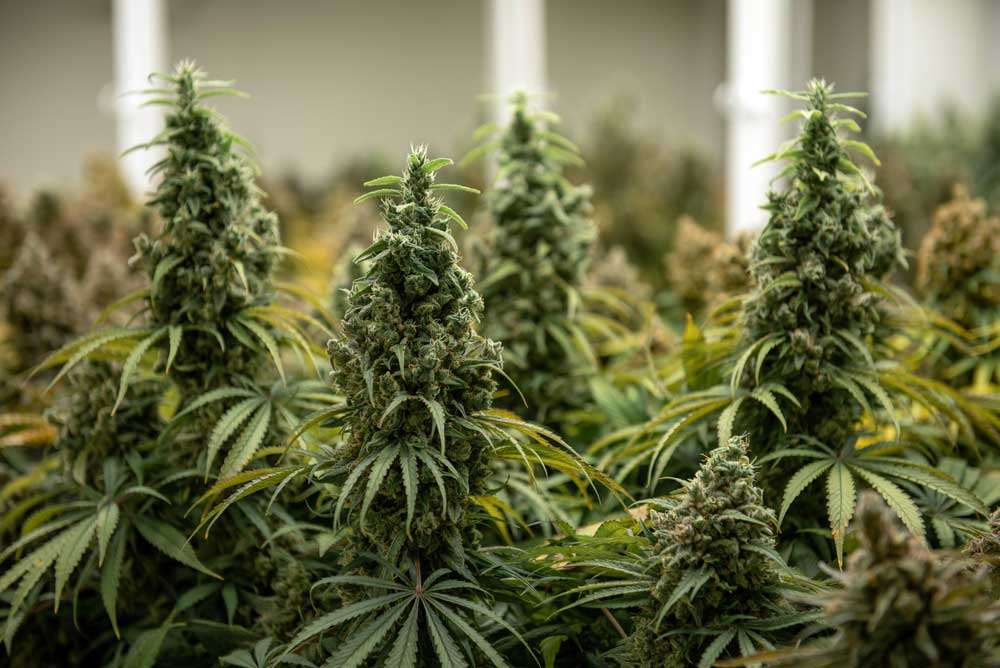
Carbon dioxide or CO2 is an important gas for every plant to perform its photosynthesis. Plants utilize CO2 to turn sugar into energy, which they need for growth development and bud production. Some breeders found a way to take advantage of utilizing CO2 to improve the yields of their cannabis crops.
What are the benefits of introducing more CO2 gas to your cannabis plants? We answer this question as well as show you how to expose your plants to more CO2.
It is common knowledge that plants need CO2 as most living things need oxygen to live. What you may not know is how plants breathe CO2. Your cannabis plants have stomata that act as the outer part of your respiratory organs. Plants absorb the CO2 from the air through numerous stomata around its structure. They take out the carbon from the CO2 to form the sugar molecules. With sunlight and oxygen, plants turn these sugar molecules into energy.
What is interesting to note is how plants can produce more energy when there are plenty of CO2 in the air and are under constant exposure to light. The large amounts of energy a plant produces results in rapid growth of its structure during the vegetative phase. In the flowering stage, cannabis plants can utilize excessive amounts of energy to produce larger yields.
In addition, large amounts of CO2 provide other benefits to your cannabis plants. This includes added resistance against high temperatures coming from the light. Plants can deal with stress caused by intense light if it has access to more CO2.
In order to get large amounts of CO2, you will need to use compressed CO2 tanks or CO2 generators. It is important to that the two sources of CO2 works differently from each other. As the name suggests, compressed CO2 tanks are gas containers. CO2 tanks vary in sizes and are available in small canisters. In addition, the tanks do not produce heat as CO2 generators. This makes them versatile for small indoor grow rooms, including grow cabinets.
CO2 generators for garden usage are burner equipment that is similar to heaters. This type of equipment produces CO2 by burning combustible gases such as propane. Some equipment has an automatic function that turns off the flames when the grow room has a specific amount of CO2. It is important to note that the heat coming from the generators can be risky for small indoor gardens. This is why CO2 generators are suitable in large indoor gardens. It is easy to manage the temperature of large grows spaces than small ones with the right setup.
In regards to the heat that CO2 generators bring, it is a good idea to use them during the winter period. This should not be a problem since indoor cultivation is not bound by the Canadian season. The drop in temperature outside of your home will keep the heat down to a manageable level for your plants.
To boost the growth development and bud production of your plants, you will need to introduce about 1200-1500 parts per million (PPM) in your enclosed grow room. You also need to maintain this level of CO2 within the grow room to see positive results among your cannabis plants. For reference, the average amount of CO2 outdoors is 250-350 PPM.
You might come across CO2 supplement kits in the market. These products claim to add large amounts of CO2 within any garden and are often treated as gardener supplements. While the claims are indeed true in regards to their CO2 production, the amount of gas these kits can generate is insignificantly lower than the minimum of 1200 PPM that we are looking for.
Remember, cannabis plants can only make use of the large amounts of CO2 within their surrounding if they are under an intense light source. Plants need to be under around 7,500 to 10,000 lumens per square foot to benefit from the 1,200 to 1,500 PPM of carbon dioxide in the growing space.
With the lumen requirement in mind, fluorescent bulbs are not sufficient for your CO2 setup. You will need to utilize HPS grow lights or LED lamps to get the lumen output you want.
High-pressure sodium (HPS) fixtures are high-intensity discharge (HID) lamp that creates its light by lighting that gas within the bulb. This results in lighting that has a red to orange tint, which is beneficial to cannabis plants during the flowering phase. In addition, HPS bulbs have a long lifespan than other light fixtures.
However, HPS fixtures can be challenging to use in grow rooms due to the heat they produce. If you plan on using this type of fixture, the lamp must be at least five feet away from your plants to avoid overheating them. You may need to find a way to manage the heat within your grow room that has an HPS fixture and a CO2 generator. This includes installing a ventilation system that can efficiently move hot air out of the grow room and draw in cool air. Overall, HPS fixtures are suitable for large grow rooms that provide a safe distance between the plant and bulb.
HPS lamps are available in a wide range of wattage. The key to getting the most lumens out of a single bulb comes from knowing the effective range of an HPS bulb. For example, 600W HPS lamps can light plants within 3’ x 3’ square foot of space while 1000W lamps can cover 4’ x 4’ square foot of space.
Another lighting fixture to use for your CO2 setup are LED lamps. LED fixtures emit light with a balanced spectrum that is beneficial for your plants. This includes improving its photosynthesis function or the conversion of sugar into energy. The main advantage of LED fixtures is its low heat production while the lamps are running. This makes the grow light safe to use in small grow rooms or cabinets.
The main issue with LED lamp is its initial cost. Light fixtures that are usable to grow rooms cost more than HPS fixtures. In addition, LED lamps are not suitable in areas with high temperatures because the heat can lessen the lifespan of the bulbs. Even if the lamps are functioning, intense heat can degrade the quality of the light coming from the fixture.
A good CO2 setup must maintain the gas levels within 1,200 to 1,500 PPM range. One way of achieving this is to seal the air within your grow room or cabinet. This will prevent the CO2 from escaping the room and allow the gas to build up for the plants to use.
In the case of walk-in grow rooms, secure the windows with sealants along the seams and cover it with white drapes or plywood. You will also want to use a tight-fitting heavy-duty door to keep the leak down to a minimum. Another way of sealing the room within the point of entry is to use a zipper door with a lightproof material. When installed on the doorframe, zipper doors have barely any small opening for gas to escape.
The optimal temperature range of your sealed grow room should be around 29°C to 35°C or 85°F to 95°F. Most cannabis plants thrive with this amount of heat within their surroundings. However, certain strains might not handle this temperature range. It is important to be on a lookout for signs of overheating or heat stress among your plants to determine if you need to bring down the temperature.
Handling the temperature of HPS lamps can be a challenge if you are circulating the air within the room and not allowing most of the hot air to leave the area. A good way to address this problem is with cool tube hood reflector. This reflector lets you build a separate duct system for the HPS bulb. This allows the grow lamp to exchange cool and hot air without affecting the CO2 level within the room. With the heat kept inside a sealed chamber, plants are less at risk of overheating. In addition to sealing heat in, cool tubes reflector can spread the light from the lamp efficiently.
Another similar reflector is air-cooled hoods that function nearly the same as cool tubes. Air-cooled hoods also have a glass or heavy-duty plastic barrier to keep the heat within the small space of the reflector. They can also connect to a separate duct system to exchange hot air for cold air in order to maintain the temperature of HPS lamps. What makes the hoods different from cool tubes is its wide reflective surface. This results in the light efficiently shining down on the plants.
It is interesting to know that CO2 is dense than air and will have no problem flowing down on the room. You can make the most out of the weight of the gas by distributing it with a fan on the floor of your grow room. Position the fan to blow air towards your plants
The additional energy production of the plants is beneficial during the vegetative stage. Plants utilize the energy to keep growing bigger as well as forming new branches and leaves. Continuous exposure to high levels of CO2 is beneficial throughout the vegetative period of the plants.
The flowering period is a different story as attested by many breeders that use a CO2 setup in their garden. Cannabis plants can use large amounts of carbon dioxide to grow larger buds. However, this is only evident during the first part of the flowering period. After around three weeks, plants barely show any sign of improving its buds with vast amounts of CO2 present within the environment. With this fact in mind, it is a good idea to stop introducing CO2 in the grow after the third week of your plant’s flowering period.
Always keep in mind that CO2 is lethal when people inhale a large amount of it for a long time. While the 1,500 to 2,000 PPM range is not quite as deadly, being in a room with this amount of CO2 can lead to light-headedness or nausea. In certain cases, the grow room might have more than 2,000 PPM of the gas that leads to serious medical concerns.
Install a control-monitoring device to your CO2 setup. The device will activate the CO2 generator or tank to achieve the desired PPM range. This is essential since it is not viable to determine how many hours are needed to generate the right amount of carbon dioxide within the room. In worse cases, you might reach dangerously high CO2 levels.
When working with CO2 it is a good idea to have a CO2 meter or measuring device available. This will tell you if the amount of gas in the room is well within the safest range possible. It is also a good idea to install a couple of CO2 detectors within the vicinity of your grow room. The detectors will alert you of leaks coming out of your garden and entering the enclosed space of your home.
If you need to work inside the sealed room of your grow room, do so in short increments of up to five to 10 minutes only. Should you feel lightheaded, quickly exit the room. Consider turning off the CO2 tank or generator and allow the gas to exit out of the room if you need to be inside for an hour or longer.
When buying a CO2 generator, always pick one that has a safety feature when knocked over. This feature turns off the fire automatically if the appliance tilts to one side. Consider bumping a CO2 generator upon receiving it to determine if the safety feature is working or not.
Remember to turn off CO2 generators or tanks when turning off the lights for the plants. Plants cannot take in carbon dioxide with the absence of any light and will breathe in oxygen instead. Shutting off the source of the CO2 will save you money on unused gases as well as prevent excessive amount to build up within the room.
You can now see how exposing your plants to large amounts of CO2 is beneficial throughout their growth cycle. Remember that the source of the CO2 and the light fixtures within the grow room are key to the efficiency of your CO2 setup. As with handling large amounts of carbon dioxide, always keep your safety in mind when tending to your garden. This includes installing a control-monitoring device to keep the CO2 from reaching dangerous levels.

Pot growers always ask the same basic question: How much weed does a weed plant produce? The answer is complex and depends on a multitude of var

Ever had the room spin after a few hits? You're not alone. Figuring out how to prevent getting dizzy high can make your cannabis experience a wh
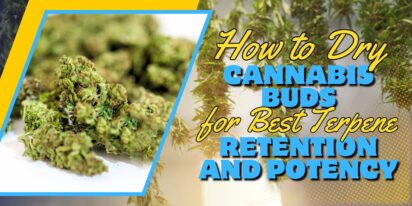
Drying cannabis properly is a critical process in preserving the plant's full aroma and flavor and its psychoactive abilities. Tampering with th

Ever caught yourself a bit too high and all of a sudden in need of being normal? Whether you're heading out for munchies or bumping into someone

Looking for sage advice on how not to get pinched with weed without batting an eye? Attempting to protect your stash from gossipy roommates, sno
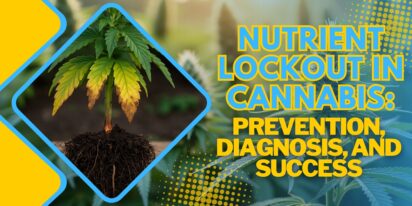
Nutrient lockout, also known as nutrient binding or chemical antagonism, is a significant issue in cannabis cultivation that negatively impacts

Germination is the most critical initial stage in growing healthy, high-quality cannabis plants. During germination, the dormant seed becomes a
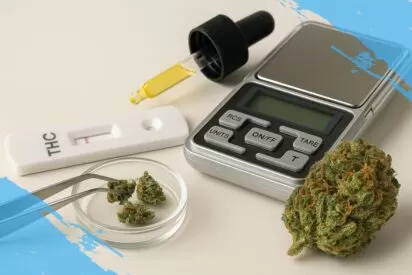
The strength of cannabis is still a hot topic in both marketing and science. One number—33% THC—is often the most important, which gets peop

Do you ever find yourself curious about what actually separates being drunk from being high? In this blog post, we're going to examine the showd
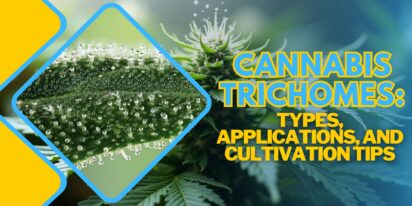
Cannabis trichomes are the microscopic resin factories of the plant that create the cannabinoids, terpenes, and flavonoids. As growers and conno
Are You 21 Or Over?
YesOr
No By clicking yes, you certify that you are over 21 years old. By using this website, you agree to our legal disclaimer.
My brother suggested I might like this blog He was totally right This post actually made my day You can not imagine simply how much time I had spent for this info Thanks
I have read some excellent stuff here Definitely value bookmarking for revisiting I wonder how much effort you put to make the sort of excellent informative website
I just could not depart your web site prior to suggesting that I really loved the usual info an individual supply in your visitors Is gonna be back regularly to check up on new posts
I wanted to take a moment to commend you on the outstanding quality of your blog. Your dedication to excellence is evident in every aspect of your writing. Truly impressive!